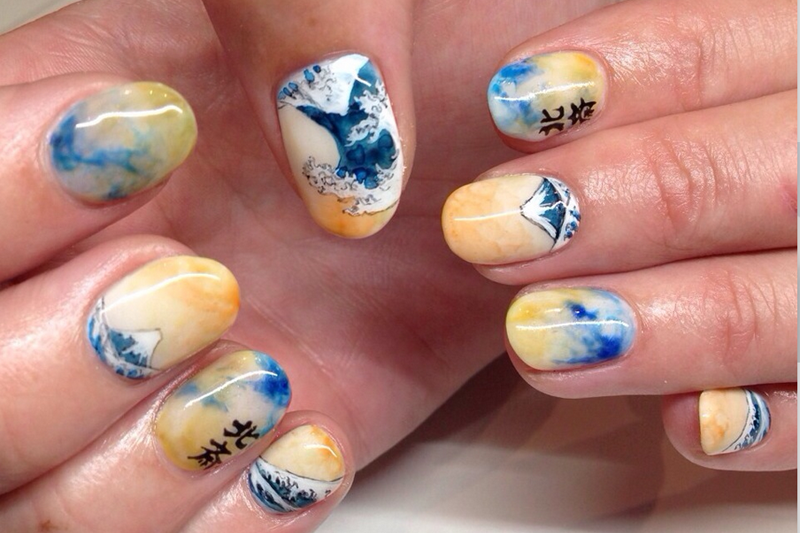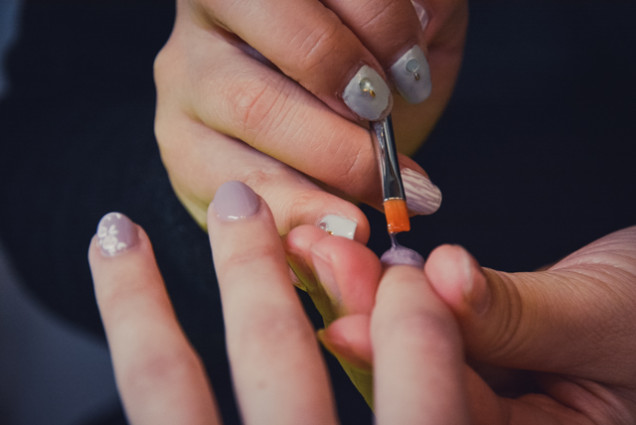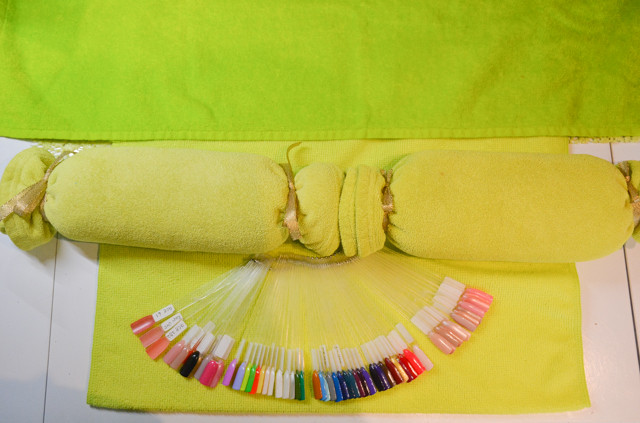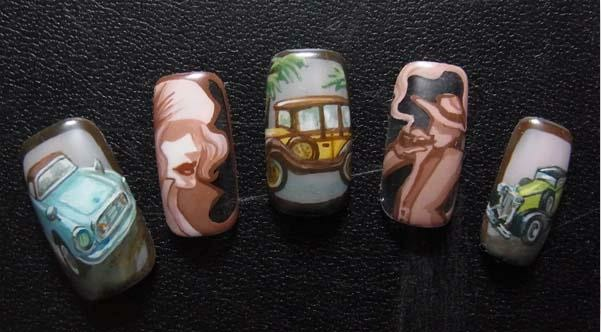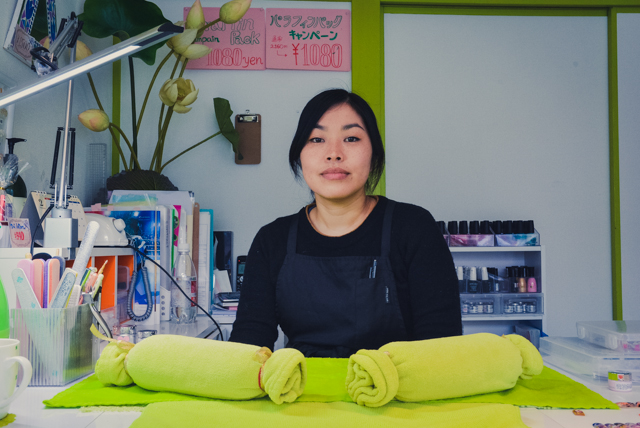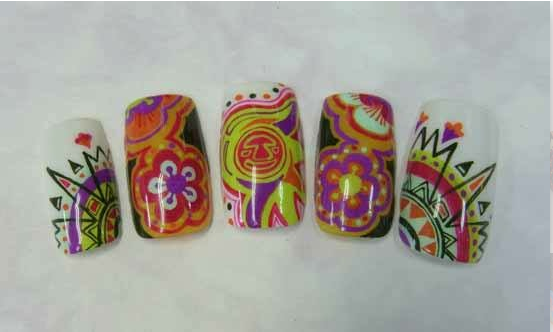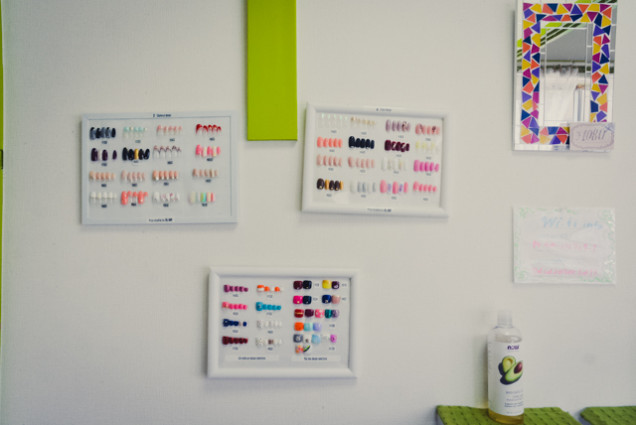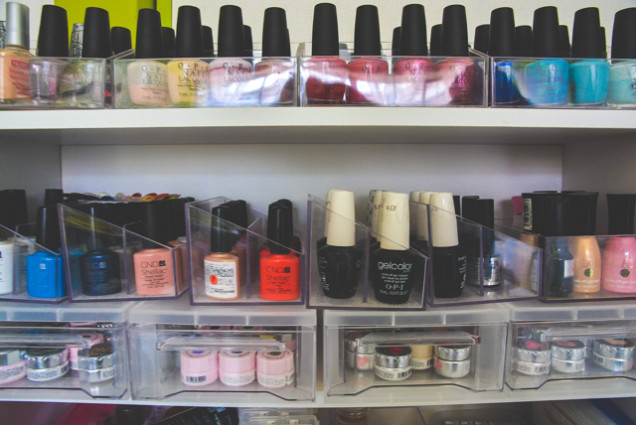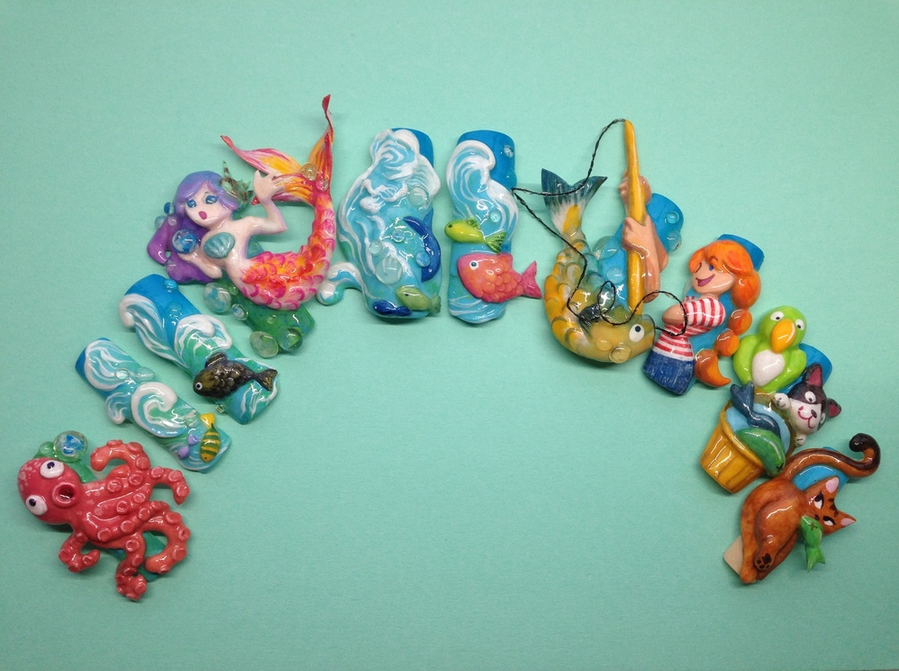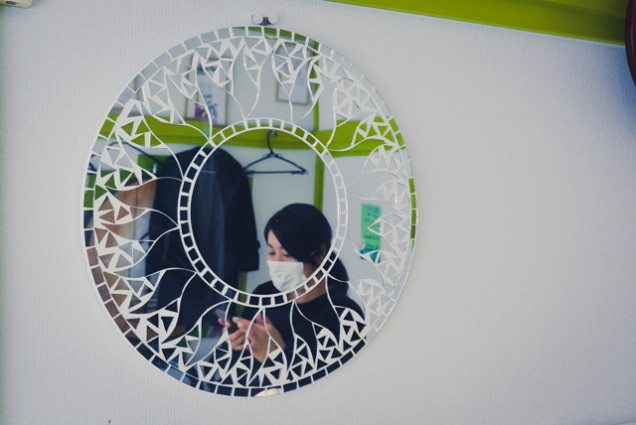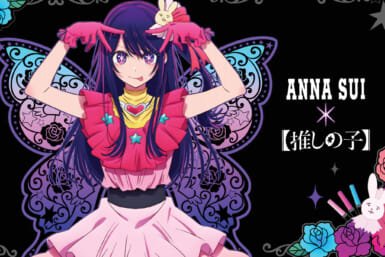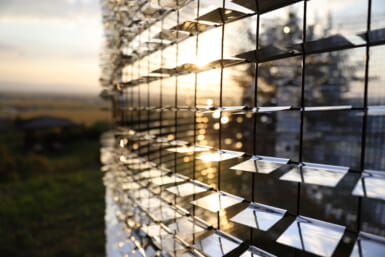This nail artist will make you reconsider what is possible to achieve on ten fingernails.
By Natalie Jacobsen
Tomoko Funatsu, who goes by her artist pseudonym, “Asagami,” is one of the lead and most sought-after nail artists at the salon. There is fluidity in her movements; there’s no bustle, no rush, no disorganization. She asks what the vision is, and, without diverting her attention from the desk, reaches behind and around her, snatching colors, gels, oils, and mattes. Without prompting, she gently places hands on to the lime towels, swiftly applying coats before you even realize what’s happening. Her gaze doesn’t waver as she holds fingers gently in place, expertly brushing and dabbing oils on cuticles.
“I have been painting my whole life. My parents weren’t surprised when I chose to study art in university to be an illustrator for children’s books, but they were surprised when I decided to be a nail artist.” Asagami admits she isn’t as interested in fashion as people suspect she is, “[but] I like to express myself through my nail art.” Her own nails are a jumble of colors and designs, “because I’m doing interviews for new artists to join our salon.”
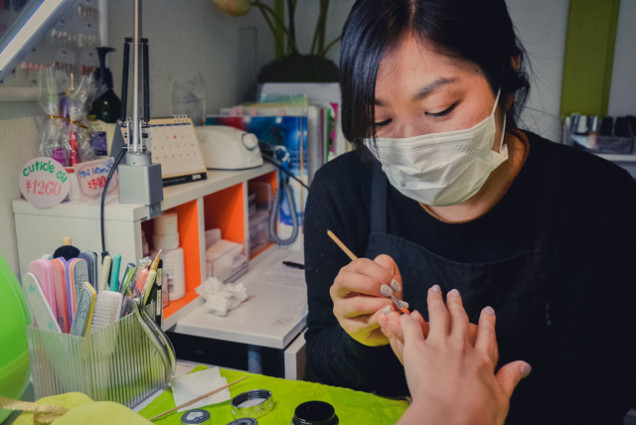
The small group of stylists are like a family. “There’s only about four of us here [at the Azabu Juban studio], and a few at the new Roppongi studio.” Their Roppongi branch is only their second salon, and opened at the end of 2015. Joli Nails in Azabu Juban serves more than just fierce nails: light “spa” amenities are offered, from waxing to eyelash extensions. Downstairs is a small day care for moms looking to relax can safely drop their kids off for the hour or two they’ll be occupied. “Our own, Janica, is a mom, so the idea came from her…naturally.” She chuckles behind her surgical mask.
By now, she has painted the nails over several times, the conversation flowing so much that it almost seems she is painting on autopilot – but somehow, she and hasn’t slipped once. “Customers bring in photos of their pets or children or a piece of art that they like and I have fun [replicating] it for them on their nails.” She pauses and shifts a little bit, holding tightly to the palm, diverting her eyes to investigate her work intently. But what does she prefer? “When a client has colors in mind, but lets me choose a design, I really like that. I have the freedom to make anything that comes to mind.” Do ideas come easily? She is too humble to respond directly, but the numerous awards posted around the quaint space speak beyond the confines of the studio.
Asagami flies around the world regularly to enter in competitions. “I am so lucky to have Janica and the other artists support me here. They give me [the flexibility] to travel when I need to for a competition.” Perhaps it’s because they know she will always bring home the top prize. Her surgical mask can’t shield her beaming grin when she speaks about her wins “at the biggest nail competition I did in Las Vegas.” The city proved to be an overwhelming experience. “I even tried the slots!” But she waves her hand when asked if she struck it big. “Only with my art.”
Asagami went to Ireland on a working visa, and she stayed in the countryside for a year, taking classes and spending her days in museums. “I didn’t know any English. But I wanted to go for the art and the experience. And now, I have so many friends from around the world. I’m so lucky.” She thought the Mona Lisa was a bit disappointing, but adores Van Gogh. “I can really…feel his paintings. They move…” She blushes, unsure of what words to describe the emotions.
Her own art work invokes many emotions, and it’s clear her imagination regularly runs rampant: ranging from a spattering of patterns and fractals to impressionist-style fantasies, her work is eclectic and bright. “Yellows and oranges are my favorite colors to work with.” She fights trends, and doesn’t follow what celebrities or the latest designers are choosing.
On the door is a posting on their donations made to Zero Japan. When asked about it, her eyes light up and her mask is lowered. “It’s a [shelter] that keeps cats and dogs that don’t have homes alive until [they find a permanent family].” Animals are close to her heart. “I would go to a cat café everyday, until it closed years ago. The café asked me if I could take one of the cats home with me. My apartment [didn’t allow] pets, so I moved an hour away, but now we live together.” The charity, and achieving animals’ rights, are her biggest passions aside from her art. “Japan,” she says fervently but carefully now, “has a long way to go. Mass communications are most at fault. Everyone watches TV, but nobody knows or cares about animal treatment. Even one show, [shown once], could help.” Photos of her cat are hung over her studio desk, nail art replicas beneath.
Asagami is given the reins, now, to add her own flair as the final touch to the nails. She happily seizes a nearby brush, and, unflinchingly, swirls it across the nails. She flirts with the brush, waiting until the last second before the gel drips, to paint. She always catches, and hasn’t once strayed beyond the nail. “My very first day, at a different salon, years ago, I forgot to [soften] the nail file, and accidentally sliced my client’s finger. I haven’t made a single mistake since.” She shudders, shaking her head vigorously as if to get the memory out of her mind.
Her portfolio is remarkable. The intense colors, array of styles, and 3D nails are other-worldly. It only takes her a couple of hours to think of a design for painted nails. Sculpted, 3-dimensional nails can take up to two weeks, because of the sculpting, sanding, and drying stages she goes through. They aren’t her favorite, but she does them for competitions. Her wedding nails, portraits, and originals are all in a little box, haphazardly stored, but treasured nonetheless.
“Art was always my favorite class in school. Art is so important in Japan. There aren’t many places [or ways] we can express ourselves. Many teachers, though, don’t like it when children [experiment with] their own art. Education in Japan needs to [retain] art classes forever…and let children be themselves in art.” She herself is dressed comfortably in all black, a nod to the conservatism in the Japanese workforce. “But we can always have nail art.”
Even the mask can’t hide her pride.
Check out the Joli Nails homepage for more information on both the Azabu Juban and Roppongi studios, and to make an appointment. http://www.joliarts-salon.com/

